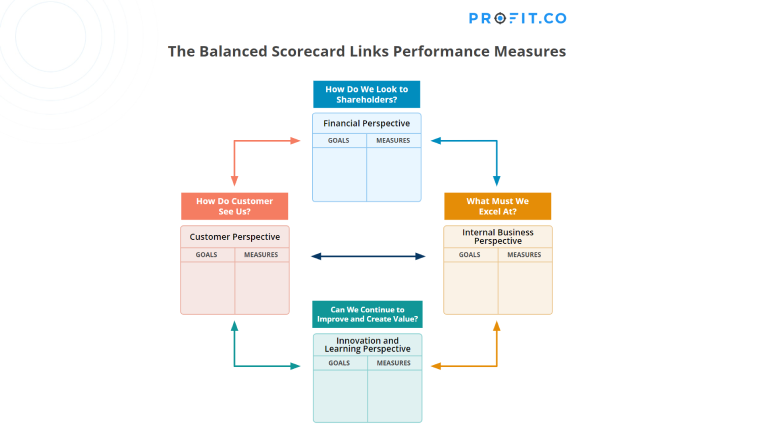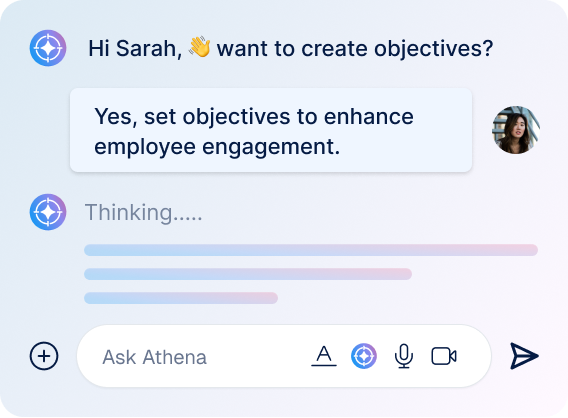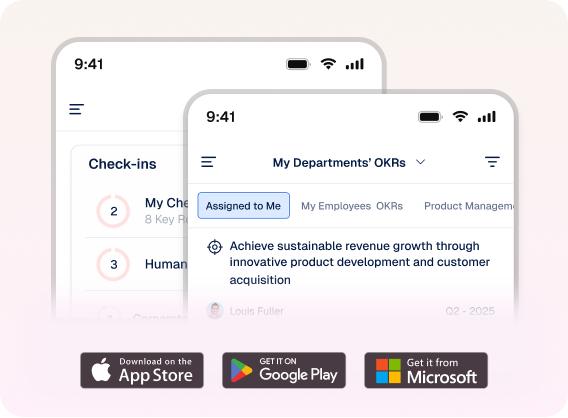The Balanced Scorecard (BSC) is a revolutionary tool that offers a broader perspective on performance. Through the BSC, businesses can translate their mission and vision into actionable indicators spanning customer satisfaction, daily operations, staff development, and of course, finances.
The meaning of the Balanced Scorecard, as its name suggests, provides a balanced view of an organization’s performance. It goes beyond just financial numbers, emphasizing that elements like continuous learning, efficient processes, and a focus on customers are equally essential for a business’s long-term financial well-being. It also ensures that every task performed today is in sync with tomorrow’s goals.
Table of Contents
- What is a Balanced Scorecard?
- What is the history of the Balanced Scorecard
- What are the benefits of Using a Balanced Scorecard
- What are the four perspectives of the Balanced Scorecard?
- Who Uses the Balanced Scorecard?
- Real-World Companies Using the Balanced Scorecard Framework
- How to Create a Balanced Scorecard: Step-by-Step?
- Common Challenges in Implementing a Balanced Scorecard
- Balanced Scorecard Example for a Nonprofit Rescue Mission
- What is a Strategy Map and How Does It Relate to BSC?
- Conclusion & Final Takeaways
TL;DR
The Balanced Scorecard (BSC) is a strategic management tool that helps organizations align their day-to-day operations with broader strategic goals. It measures performance across four perspectives: financial, customer, internal processes, and learning and growth. This comprehensive approach enhances decision-making and strategic focus.
Definition of Balanced Scorecard
The Balanced Scorecard (BSC) is a strategic management tool that provides a comprehensive view of an organization’s performance by measuring it from four key perspectives: financial, customer, internal processes, and learning and growth. It goes beyond traditional financial metrics, aiming to give a more holistic view of an organization’s health and strategic alignment.
What is the history of the Balanced Scorecard?
Robert S. Kaplan and David P. Norton introduced the Balanced Scorecard in 1992. They believed that while old businesses focused mainly on financial numbers, modern companies needed a broader view to address their varied goals and challenges.
What are the benefits of Using a Balanced Scorecard?
The Balanced Scorecard (BSC) lays out goals tied to strategic priorities in finance and non-finance. The next step is figuring out how to measure progress. It plans specific tasks or projects to meet those goals only after that. This unique sequence ensures that every project directly supports the strategy and doesn’t waste resources.
The Balanced Scorecard (BSC) is a tool companies use as a strategic planning and management tool for several key reasons, such as:
- Communication
- Alignment
- Prioritization
- Monitoring
It clearly states the company’s goals, ensuring everyone understands the objectives.
The BSC ensures that daily tasks and activities directly support the company’s overarching strategy.
It helps organizations determine which projects, products, or services should be focused on for strategic success.
With BSC, companies can regularly check their progress, ensuring they’re on track to achieve their strategic targets.
A mere 7% of employees today fully understand their company’s business strategies and what’s expected of them in order to help achieve company goals
What are the four perspectives of the Balanced Scorecard?
- Financial
- Customer
- Internal process
- Learning and growth
How do we look to our shareholders? This touches upon revenue, profitability, and growth metrics and links lower-level objectives to guide investments with real-time financial data.
How do customers see us? It delves into customer satisfaction, loyalty, and retention rates. Emphasizes understanding customer needs.
What processes must we excel at? This evaluates the efficiency of business operations and the quality of products/services. Highlights areas for innovation.
Can we continue to improve and innovate? This looks into employee training, corporate culture, and other avenues for organizational growth. Targets improvement and value creation.
For each perspective, goals are defined, after which measures are set to track progress towards those goals. Subsequently, initiatives (actions to achieve the goals) are outlined, and success indicators are identified. The end product, the BSC or the scorecard system, serves as both a performance monitor and a strategic guide, ensuring alignment of day-to-day operations with broader organizational aspirations.

Who uses the Balanced Scorecard?
Companies everywhere, from businesses to nonprofits to governments, use the balanced scorecard approach. It’s a favorite tool of many top companies in the US, Europe, Asia, and beyond. It’s so popular that a Bain & Co survey ranked it among the top ten management tools globally.
The Balanced Scorecard translates a company’s vision and strategy into a coherent set of performance measures
Real-world Examples of Companies That Use the Balanced Scorecard Framework
The following Balanced Scorecard examples show how diverse companies spanning various industries employ the balanced scorecard framework tailored to their specific needs and strategic objectives.
- Apple Computer
- J.D. Power & associates
- Tata Consultancy Services (TCS) – Library & Information Services function (LIS):
- Volkswagen
- Tesco
In the 1990s, Apple used the balanced scorecard to shift its emphasis from being solely a product-focused company to becoming a customer-centric one. They introduced customer satisfaction metrics and began conducting global surveys to track key market segments. They also emphasized core competencies like user-friendly interfaces, powerful software architectures, and effective distribution systems.
While they’re more known for providing scorecards, J.D. Power gives companies in various industries a balanced scorecard. They measure and report on customer satisfaction, product quality, and loyalty, offering industry benchmarks.
Started in 1970, the LIS function used the BSC approach to track its performance. They regularly evaluated their librarian’s knowledge to align with business domain expertise and tracked the network growth of their libraries.
The automobile manufacturer implemented a balanced scorecard to align its strategy with operations and check if they’re achieving its goals. They used it to improve product quality, enhance customer relations, and streamline internal processes.
The UK-based retail giant Tesco used the balanced scorecard approach to redefine their strategy in the early 2000s. They focused on four key perspectives: the customer perspective (like customer satisfaction and loyalty), operations (store formats and stock levels), people (employee development and training), and finance (profit margins, sales growth).

How to Create a Balanced Scorecard?
Creating a balanced scorecard (BSC) is a strategic activity that helps organizations align their day-to-day activities with their broader goals and objectives. Here’s a step-by-step guide:
Define your organization’s vision and strategy.
Start by outlining your organization’s vision, mission, and main strategic goals.
Identify the four key perspectives
- Financial Perspective: Understand how financial success looks for your organization.
- Customer Perspective: Focus on customer needs and satisfaction.
- Internal Process Perspective: Examine your core processes and operational efficiency.
- Learning and Growth Perspective: Look into your organizational growth, learning, and innovation.
Ready to start your KPI journey today?
Develop objectives for each perspective.
These can range from boosting annual revenue (financial) and enhancing customer loyalty (customer), to streamlining product delivery (internal process) and improving employee training programs (learning and growth).
- Choose metrics and KPIs
- Set targets for each KPI
- Identify Initiatives to achieve targets.
- Link initiatives and KPIs to budget and resources.
- Implement the BSC
- Monitor, Report, and Review
- Iterate and Improve
Tangible KPIs might include aiming for a 15% ROI (financial), increasing customer retention by 10% (customer), reducing product delivery time by 20% (internal process), or amplifying training sessions by 50% (learning and growth).
Decide on specific, measurable targets for each KPI to ensure they are aligned with your strategic goals and are realistic yet challenging.
To boost revenue, consider diversifying the investment portfolio. Enhance customer loyalty through a loyalty program, streamline product delivery with a new inventory management system, and improve employee training by introducing an e-learning platform. Each initiative directly supports specific objectives and KPIs, creating a focused approach to strategic growth.
Allocate necessary resources (human resources, money, or technology) for each initiative to ensure effectiveness.
Deploy the BSC throughout the organization. Ensure everyone comprehends the significance of the BSC and their roles in realizing the broader goals.
Consistently track progress on KPIs. Utilize the BSC for routine strategic evaluations, modifying objectives, KPIs, or initiatives based on performance measures or any shifts in the organization’s strategy or the wider environment.
Remember, the BSC isn’t static. As your organization grows and evolves, frequently revisit and tweak your scorecard to make sure it stays aligned with your latest strategy and objectives.
The strength of the BSC doesn’t just lie in its design but in its regular use, continuous evaluations, and the dedication of the entire organization to its strategic objectives.
50% of organizations now use a Balanced Scorecard designed to improve strategic management and decision-making. Take strategic management to the next level with Profit.co’s comprehensive OKR framework and Balanced Scorecard integration. [Source: 2GC’s Balanced Scorecard Usage Survey 2020]
Common Challenges in Implementing a Balanced Scorecard
Implementing a Balanced Scorecard (BSC) sounds like a great idea, right? It’s all about aligning your organization’s day-to-day activities with your big-picture goals. But let’s be honest—like any strategic tool, it comes with its own challenges. So, before you dive in headfirst, let’s talk about some of the common hurdles you might face.
- Resistance to Change
- Aligning KPIs with Strategy
Ever tried fitting a square peg into a round hole? That’s what it can feel like if your KPIs (Key Performance Indicators) aren’t perfectly aligned with your strategic goals. It’s not just about picking good metrics—it’s about choosing ones that truly reflect the progress toward your objectives. This takes time and careful thought.
- Data Collection Woes
- Keeping the Momentum
- Overcomplicating the Scorecard
You know that feeling when you introduce something new at work, and everyone suddenly seems allergic to it? Yeah, that’s pretty common with the BSC. People get comfortable with the status quo, and the idea of tracking new metrics or changing how they work can be intimidating. The key here? Communication. Make sure everyone understands why the BSC is beneficial and how it will make their lives easier in the long run. It’s all about getting buy-in from the start.
The BSC relies heavily on accurate data to be effective. But collecting that data? It’s not always easy. Maybe your systems aren’t integrated, or the data is scattered across different departments. It can be a real puzzle. The solution? Start with what you have and build from there. Too many metrics can lead to information paralysis. Over time, you can improve your data collection processes and systems to ensure you’re getting the full picture.
Here’s the thing: the BSC isn’t a “set it and forget it” tool. It requires ongoing attention. One of the biggest challenges is keeping the momentum going after the initial excitement wears off. Regular reviews, updates, and adjustments are crucial to ensure the BSC remains relevant and continues to drive the desired outcomes. It’s like maintaining a garden—you need to keep tending to it if you want it to flourish.
Sometimes, in the excitement of covering all bases, organizations end up with a much too complex BSC. Too many metrics, too many goals, and suddenly, the scorecard becomes more of a burden than a tool. The trick is to keep it simple and focused. Choose the most critical metrics that align with your strategy, and don’t be afraid to prune away the extras.
Balanced Scorecard Example for a Nonprofit Rescue Mission
| Perspective | Strategic Objective | Objectives | KPIs | Initiatives |
|---|---|---|---|---|
| Financial | Ensure financial sustainability to fund the rescue mission adequately. | Raise sufficient funds for operations. | Achieve 95% or above of the annual fundraising target. | Launch bi-annual online fundraisers with influencers and local businesses. |
| Customer | Assess the impact and effectiveness of the rescue mission. | Improve the quality of rescue services. | Achieve a 4.5/5 rating from beneficiaries on rescue service quality. | Introduce a post-rescue feedback system for beneficiaries. |
| Internal Process | Optimize internal processes to ensure successful and timely rescue missions. | Streamline the rescue process. | Reduce rescue response time to under 30 minutes from the moment of notification. | Implement a real-time tracking system for faster deployment. |
| Learning and Growth | Build the organization’s capacity to innovate and adapt to changing circumstances. | develop staff and volunteer skills. | Achieve 95% training completion for staff and volunteers annually. | Introduce monthly skill-building workshops and e-learning modules. |
What is a Strategy Map and How Does It Relate to BSC?
A strategy map is a visual tool used to articulate and communicate an organization’s strategic goals and show how they connect to one another. It’s often associated with the Balanced Scorecard (BSC) framework, which is used to manage and measure an organization’s strategy
Below is an example of a strategy map constructed specifically for the healthcare industry based on the traditional perspectives of the Balanced Scorecard showcasing the linkage between them and the specific objectives.

Conclusion & Final Takeaways
The Scorecard Model is a strategic management tool that translates an organization’s vision and strategy into specific, measurable objectives across key areas, such as financial performance, customer satisfaction, internal processes, and learning and growth.
Over the years, the Balanced Scorecard has proven invaluable for organizations seeking to achieve a competitive advantage, drive innovation, and foster continuous improvement. In conclusion, the Balanced Scorecard is a testament to the idea that “what gets measured gets managed,” emphasizing the necessity of a balanced approach to organizational success.
Ready to align your strategy with execution?
The Balanced Scorecard (BSC) is a performance management tool that helps organizations track their strategic goals across four key perspectives: financial, customer, internal processes, and learning and growth.
It ensures that an organization’s strategy is aligned with its daily operations, helping to improve communication, monitoring, and resource allocation across all departments.
To create a Balanced Scorecard, define your organization’s vision and strategy, identify objectives for each perspective, choose relevant KPIs, set targets, and identify initiatives. Regular monitoring and review are essential for continued alignment with organizational goals.
A Strategy Map is a visual representation of an organization’s goals and how they interconnect across different perspectives, providing a clear pathway for achieving strategic success.
Companies like Apple, Volkswagen, and Tesco have successfully implemented BSC to align their operations and improve performance across financial, customer, internal processes, and learning & growth.
Related Articles
-
5 Essential Dashboards Every Business Leader Should Use
Business leaders, are you steering your strategy with crystal-clear insights—or flying blind? Profit.co's dashboards are designed to make your decisions... Read more
-
What is the best way to roll out your new OKR program?
Bastin Gerald Founder & CEO at Profit.co Last updated: March 14, 2024 In the evolving landscape of organizational transformation, the... Read more
-
What is a Succession Development Plan in Profit.co?
In the corporate world, the continuity of performance and leadership among employees is paramount. The expertise and internal understanding gained... Read more
-
Why Does Your Organization Need an Individual Development Plan (IDP) to Grow?
Introduction If you want to stay up to date on the job market, tackle the demands of today’s workplace, and... Read more




